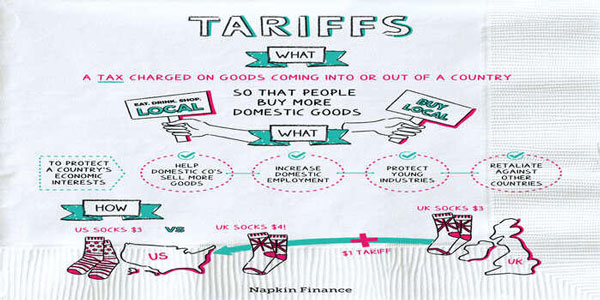When it comes to understanding your salary structure, it's crucial to distinguish between taxable and non-taxable allowances. This knowledge is not only fundamental for accurate financial planning, but also for ensuring compliance with tax laws. Allowances, which form a significant part of your income, can vary widely in their tax implications. While some allowances are fully taxable, certain others may be partially taxable or completely exempt from tax. In this article, we will delve into the complexities of taxable and non-taxable allowances in a salary, elucidating the differences, the various types of allowances, and their tax implications. By demystifying these concepts, we aim to empower you with the necessary knowledge to navigate your salary structure more efficiently and effectively.
Definition of Allowances

Allowances are payments made to employees by an employer, in addition to their regular salary. They are provided for meeting certain expenses that an employee may incur while performing their job duties. These expenses could be for work-related travel, house rent, children's education, or any other expense that is necessary for carrying out the responsibilities of a particular job role. Allowances can be either taxable or non-taxable, depending on the nature and purpose of the allowance. In general, allowances are not included in the basic salary but are paid separately.
Taxable Salary Allowances
Taxable allowances are types of income that the employee must include in their total taxable income on their tax return. These are typically included in the gross salary and taxed at the normal slab rates. Some common examples of taxable allowances include Dearness Allowance (DA), which is a cost of living adjustment allowance granted to employees; City Compensatory Allowance (CCA), provided to employees to offset the high cost of living in metropolitan cities; and Overtime Allowance, given to employees who work beyond their regular working hours.
Allowances such as entertainment allowance, meal allowance, or any special allowances are also typically taxable. While the specifics can vary depending on jurisdiction, the guiding principle is that allowances that do not meet any specified tax exemption criteria are typically classified as taxable. It is important for employees to understand that these allowances, while they add to their income, also increase their tax liability.
Non-Taxable Salary Allowances
Non-taxable allowances, on the other hand, are not included in the employee's total taxable income. This means that they are exempt from tax and do not need to be reported on the tax return. These allowances are either fully or partially exempt from tax, depending on their nature and purpose. Some common examples of non-taxable allowances include Leave Travel Allowance (LTA), which is provided to employees for their travel expenses during vacations; Medical Allowance, given to employees for reimbursement of medical expenses; and House Rent Allowance (HRA), which helps employees cover the cost of rent paid towards their accommodation.
Certain allowances, such as Conveyance Allowance, are exempt up to a certain amount and become taxable once the limit is exceeded. Other allowances, like Children Education Allowance, have specific conditions that must be met for them to qualify as fully non-taxable.
Why Understanding Taxable and Non-Taxable Allowances is Important?
Properly distinguishing between taxable and non-taxable allowances is essential for several reasons. Firstly, it helps you understand the tax implications of your salary structure accurately. This knowledge allows you to plan your finances and investments better, ensuring that you are not caught off guard by unexpected tax liabilities at the end of the financial year.
Secondly, accurately reporting taxable and non-taxable allowances on your tax return is crucial for complying with tax laws. Failing to report these correctly can lead to penalties or additional taxes owed, which can be avoided by having a clear understanding of the rules and regulations surrounding allowances.
How taxable and non-taxable allowances affect net salary?
Taxable allowances, being a part of the gross salary, are subject to income tax and hence reduce the net salary amount. On the other hand, non-taxable allowances do not impact the taxable income and hence do not affect the net salary. By understanding which of your allowances are taxable or non-taxable, you can get a clearer picture of your actual take-home pay, enabling you to make more informed financial decisions.
Legal Considerations

When it comes to legal considerations, it's important to remember that tax laws and regulations can vary significantly from jurisdiction to jurisdiction. Therefore, what may be classified as a taxable or non-taxable allowance in one country might not be the same in another. For instance, in certain countries, a House Rent Allowance (HRA) might be fully taxable unless used for actual rent expenses, while in others, it might be completely non-taxable.
Furthermore, the terms and conditions surrounding these allowances can change over time due to amendments in tax laws. It's crucial to stay updated with the latest tax reforms to ensure compliance. Non-compliance can invite severe penalties, audits, and legal consequences. Therefore, it's advisable to consult with a tax advisor or financial counselor who is well versed in these laws. They can guide you in understanding your salary structure, the tax implications of your allowances, and how to legally minimize your tax liabilities.
Lastly, it's worth noting that some allowances might require proof or documentation for tax exemption claims. For instance, to claim tax exemption on Medical Allowances, employees might have to provide medical bills. It's essential to keep such documentation handy and organized for a smooth and hassle-free tax filing process.
Conclusion
Understanding the difference between taxable and non-taxable allowances is crucial for both employees and employers. It not only allows individuals to plan their finances better but also ensures compliance with tax laws. By staying informed and consulting with experts, individuals can optimize their salary structure and minimize their tax liabilities, ultimately leading to a more secure financial future.











